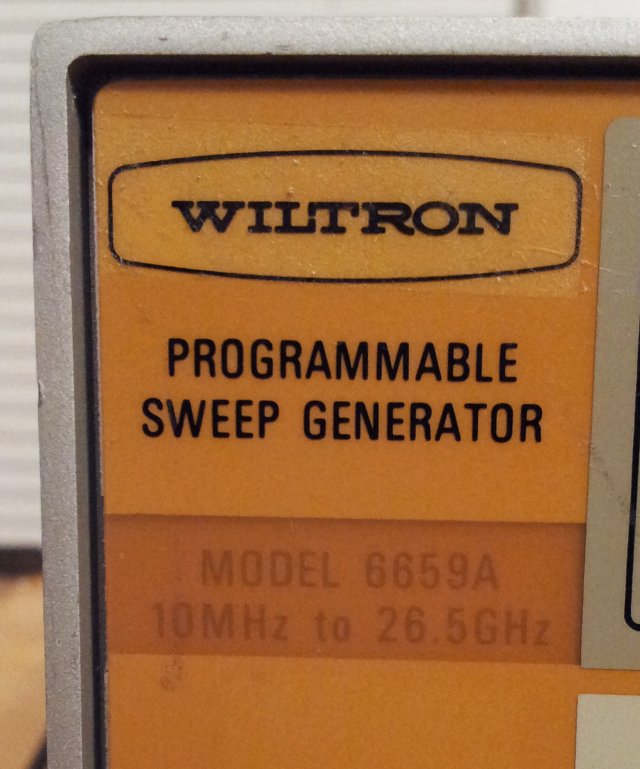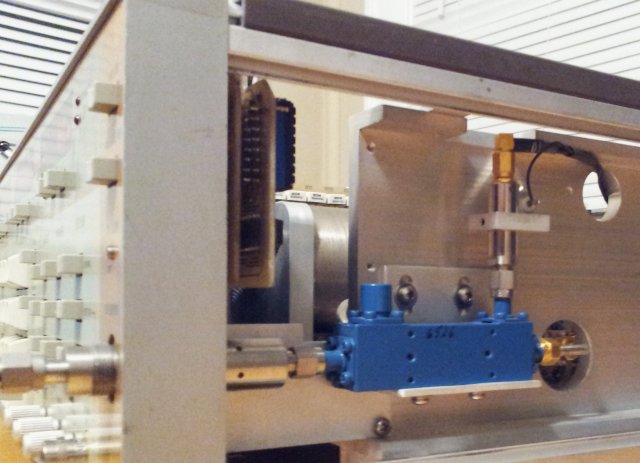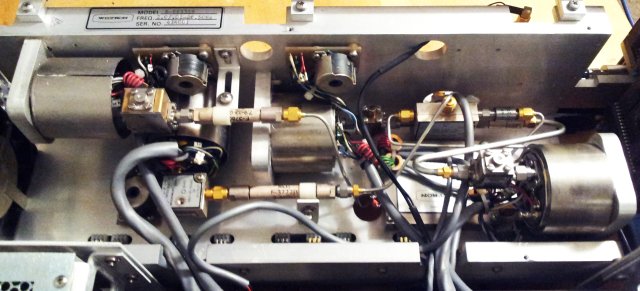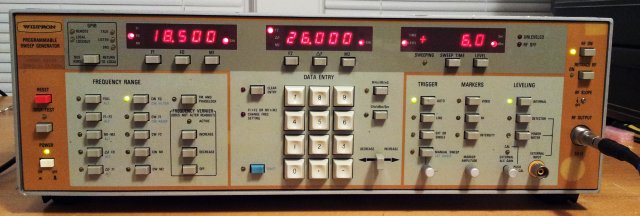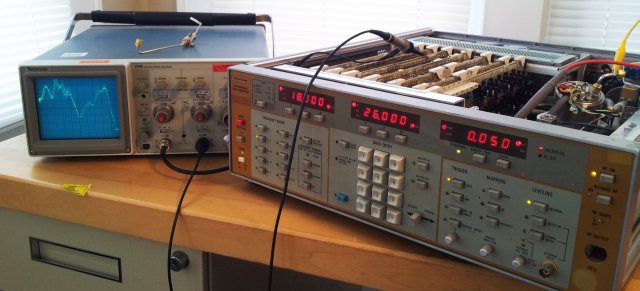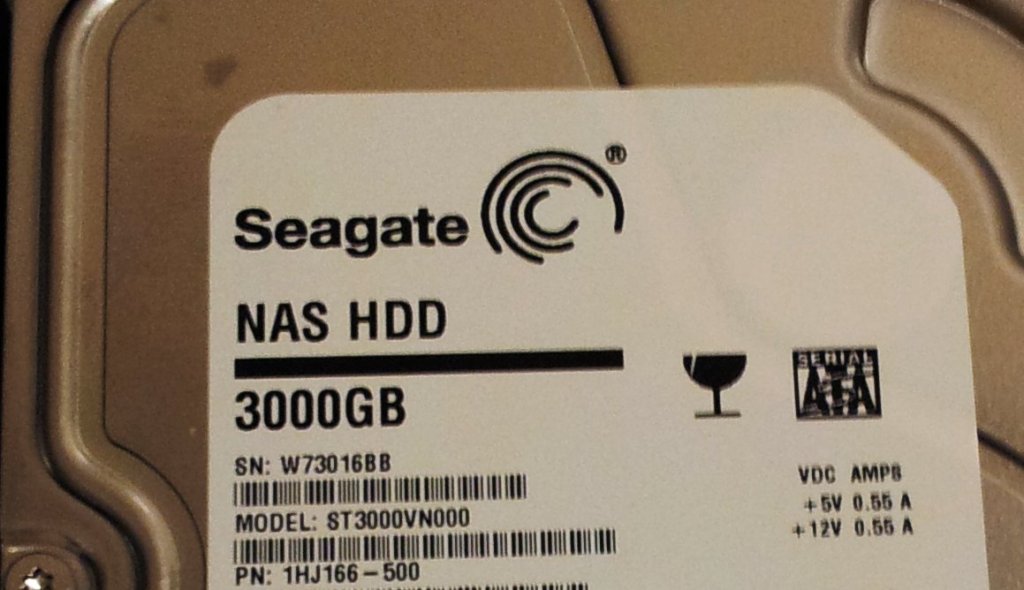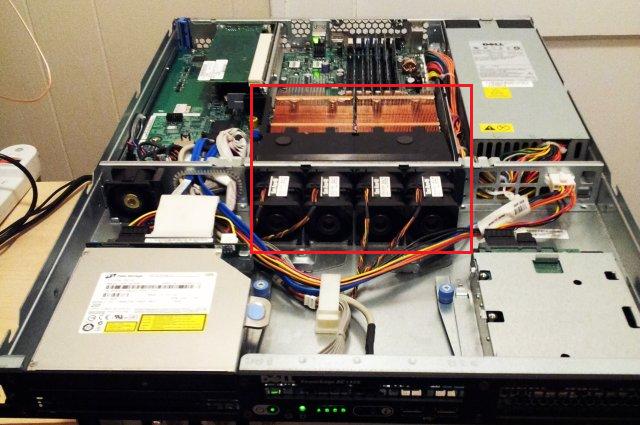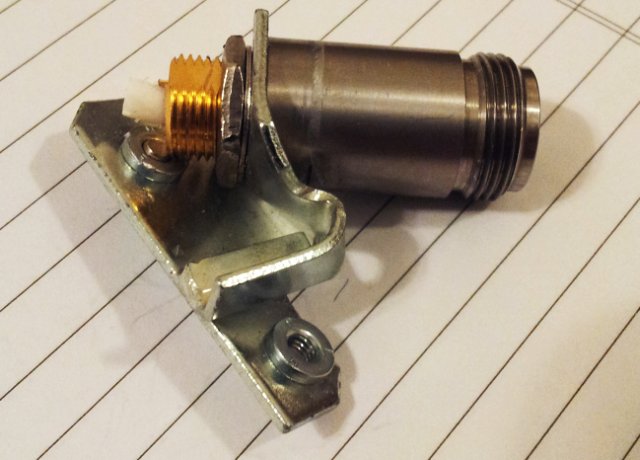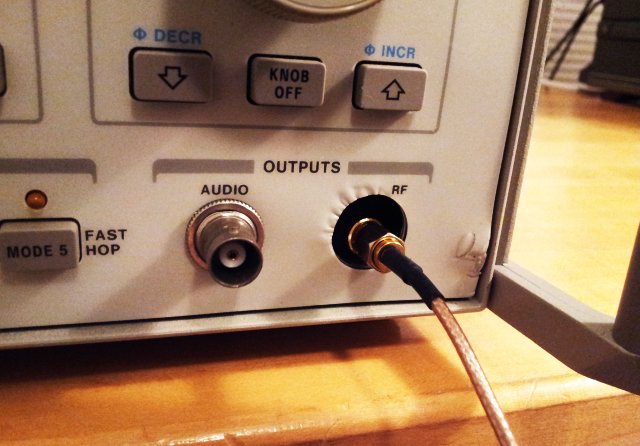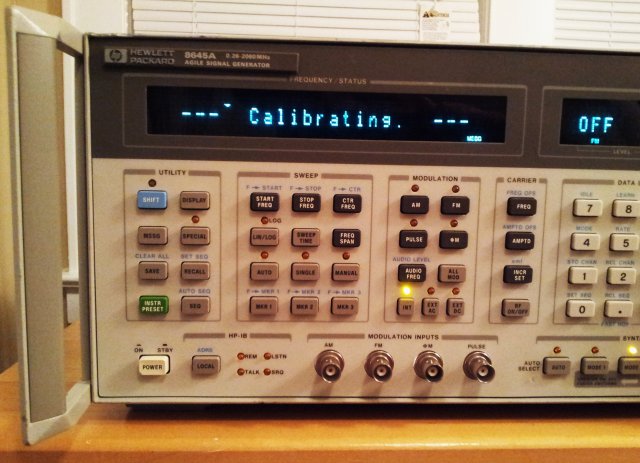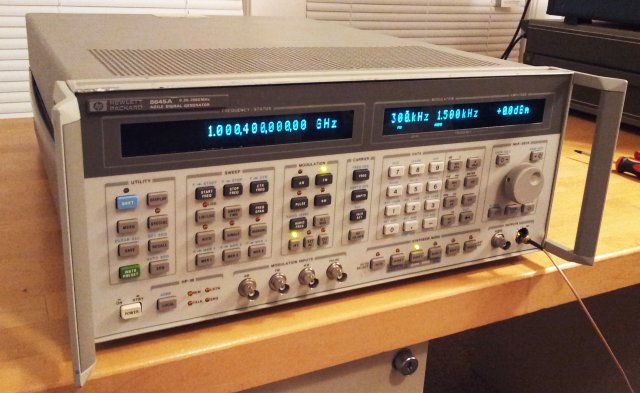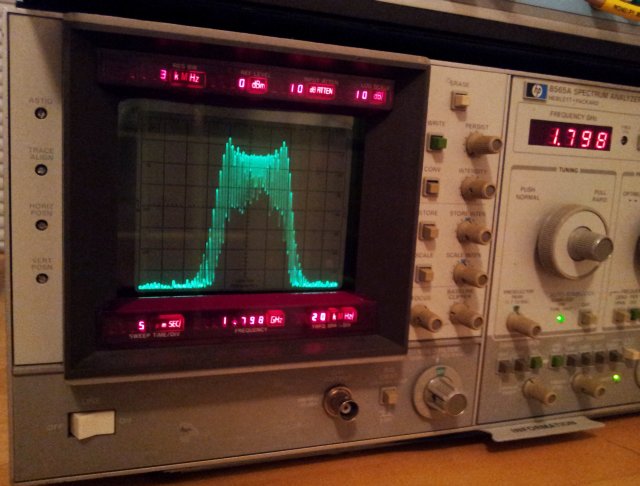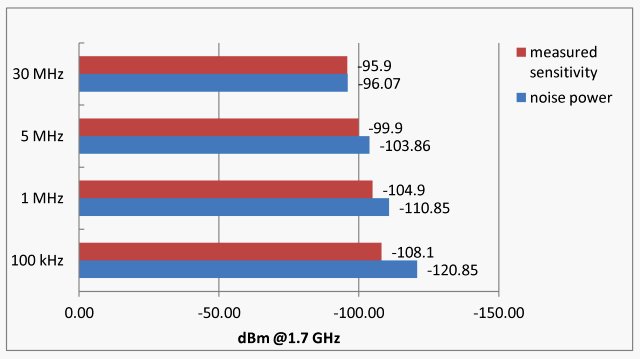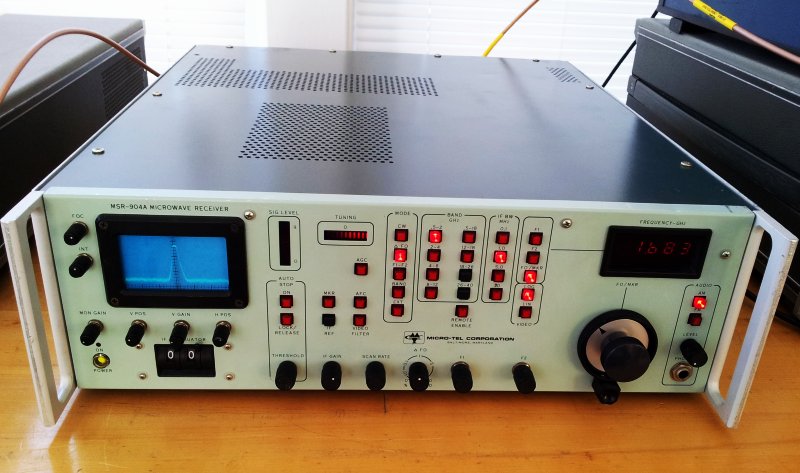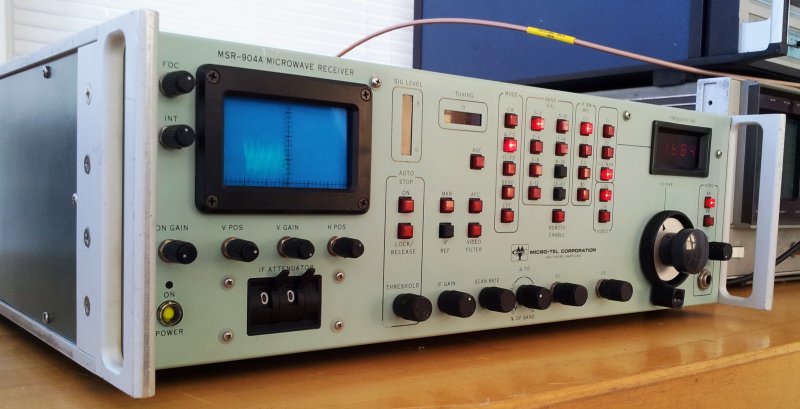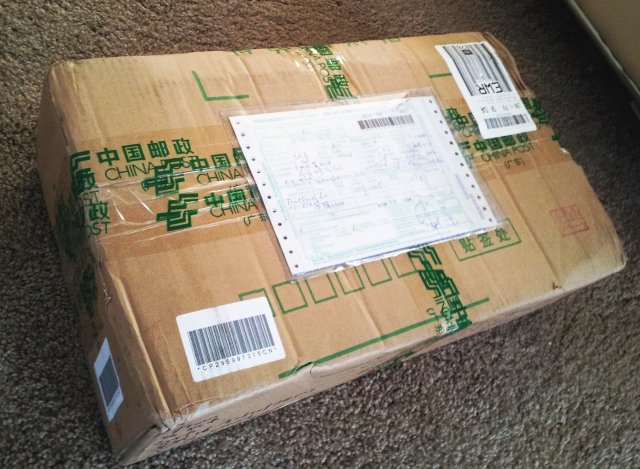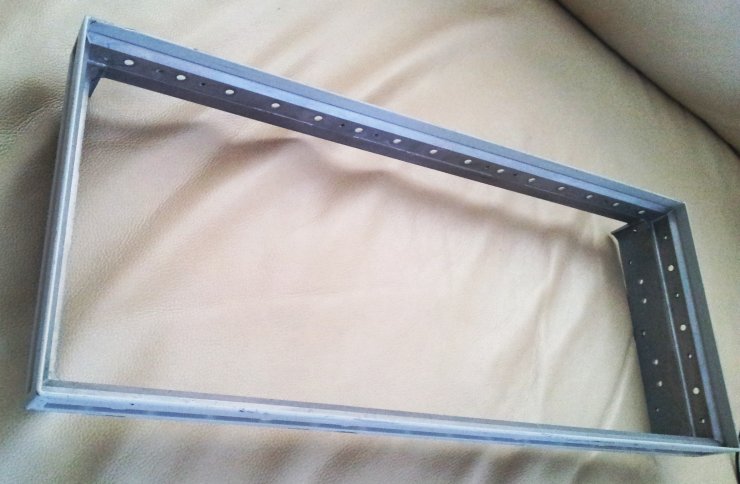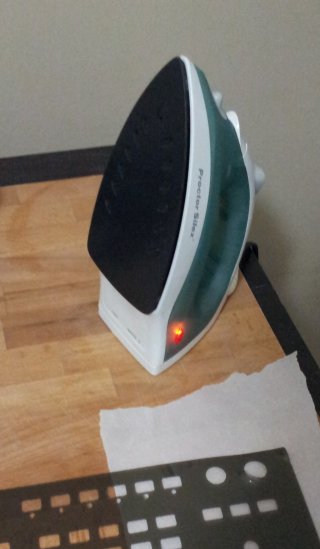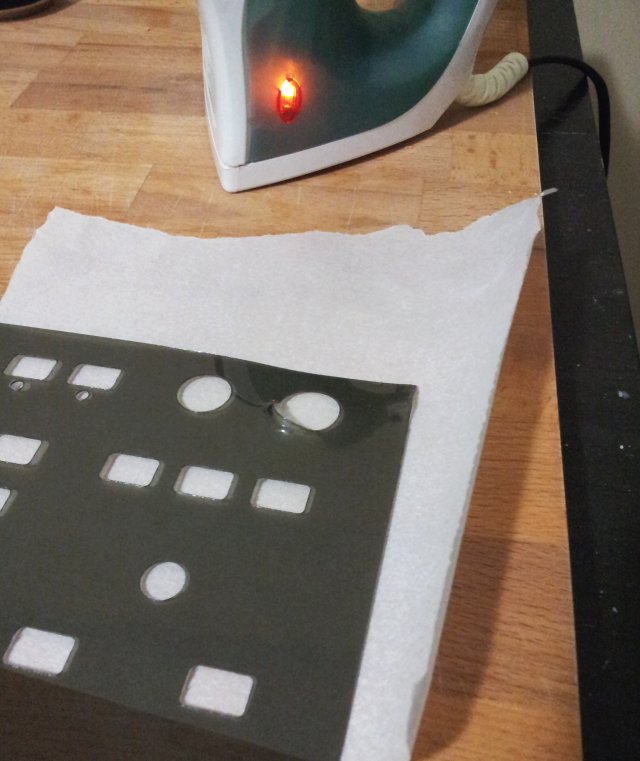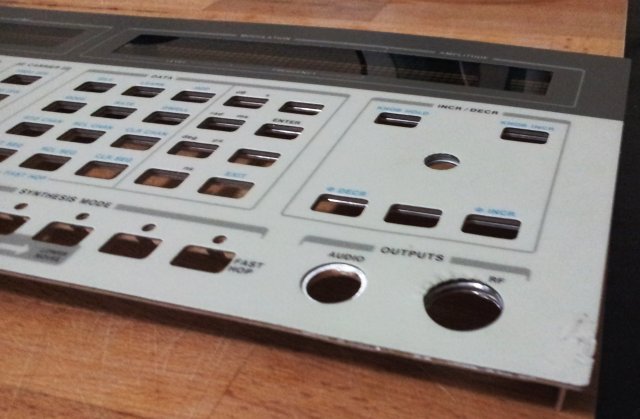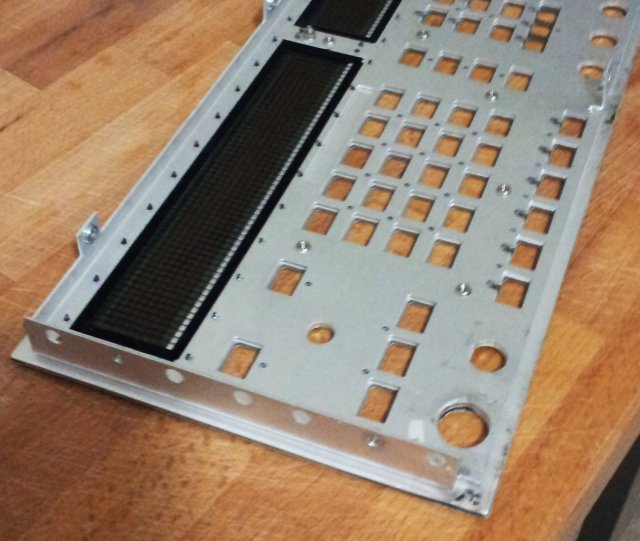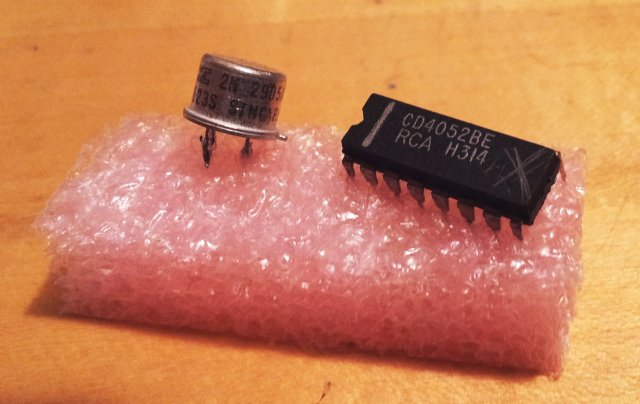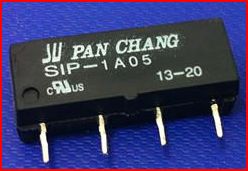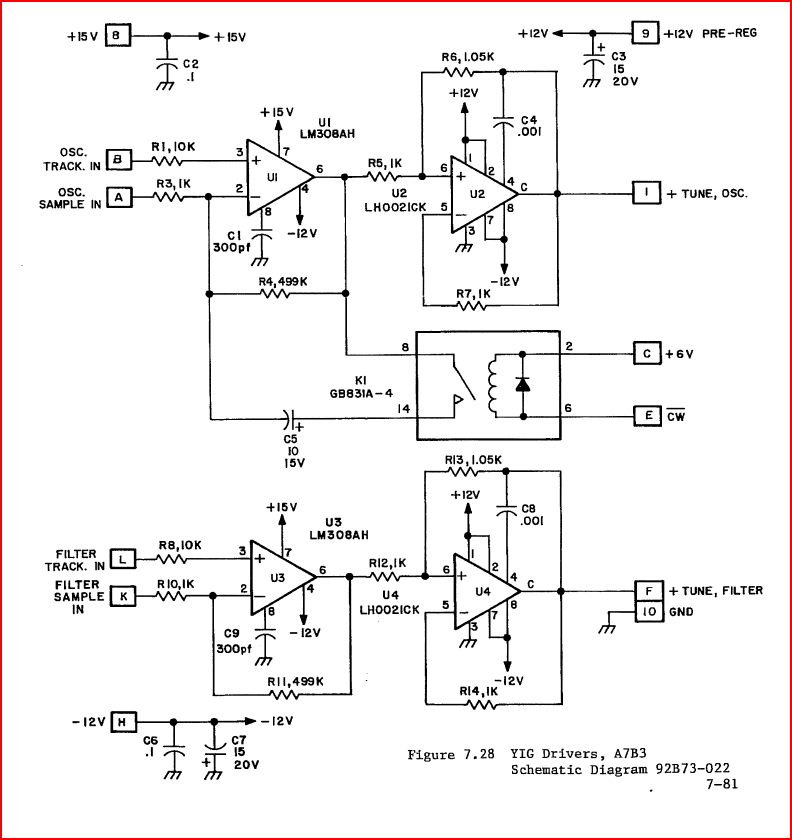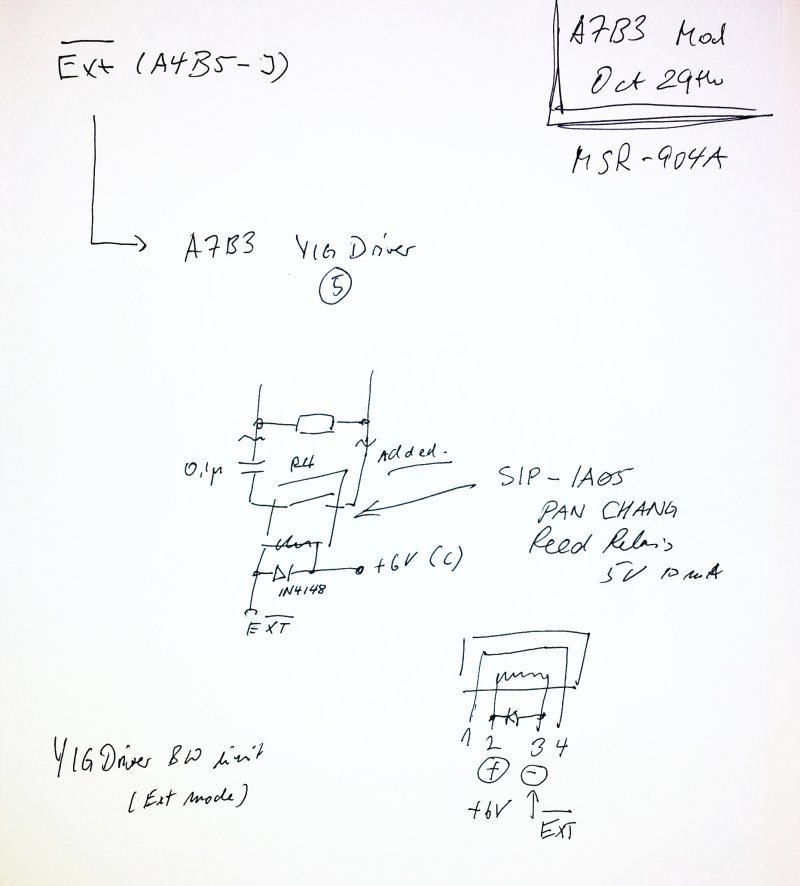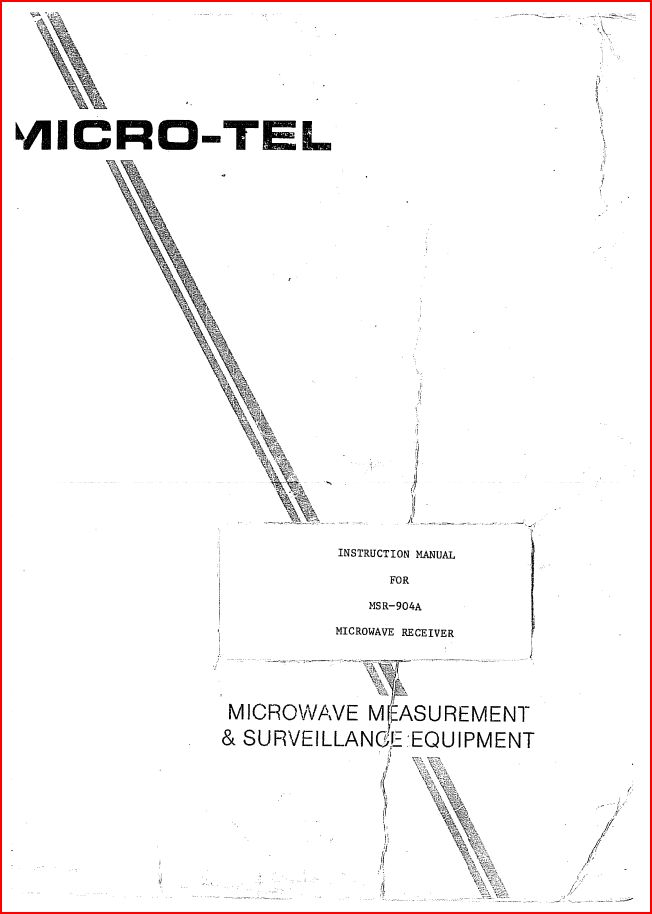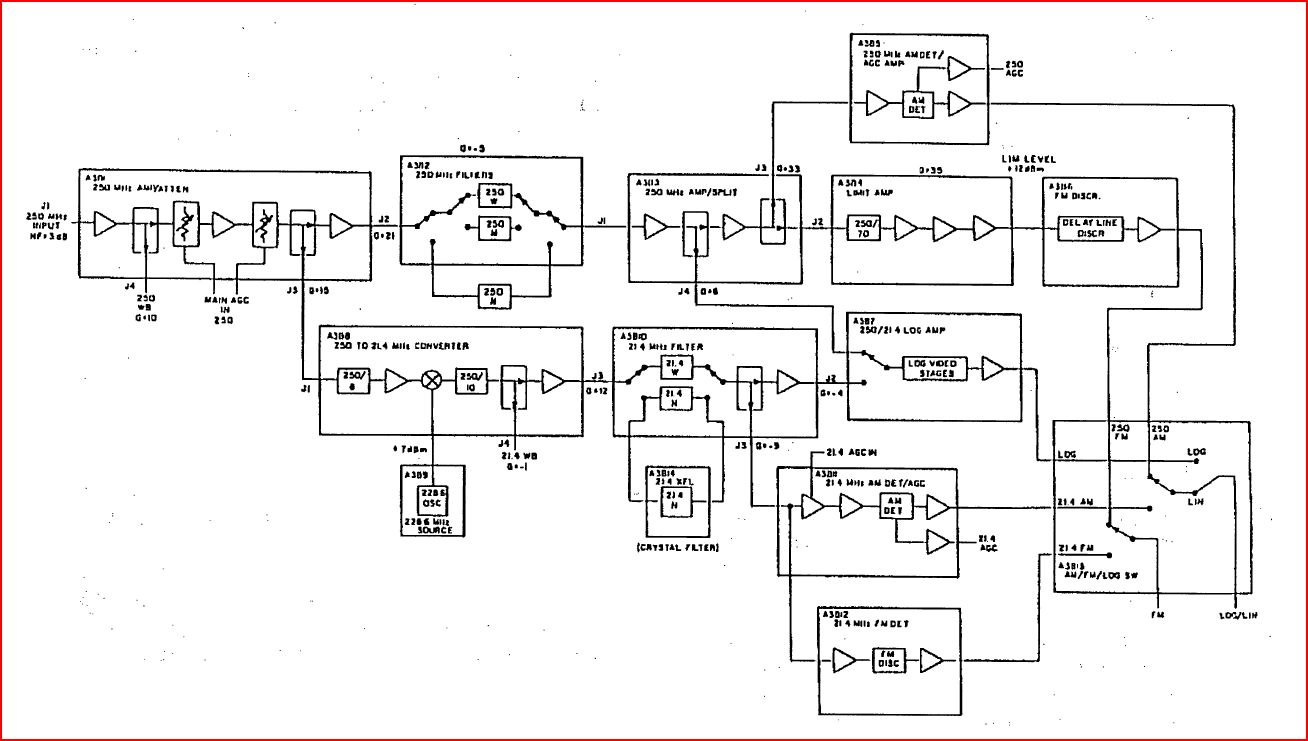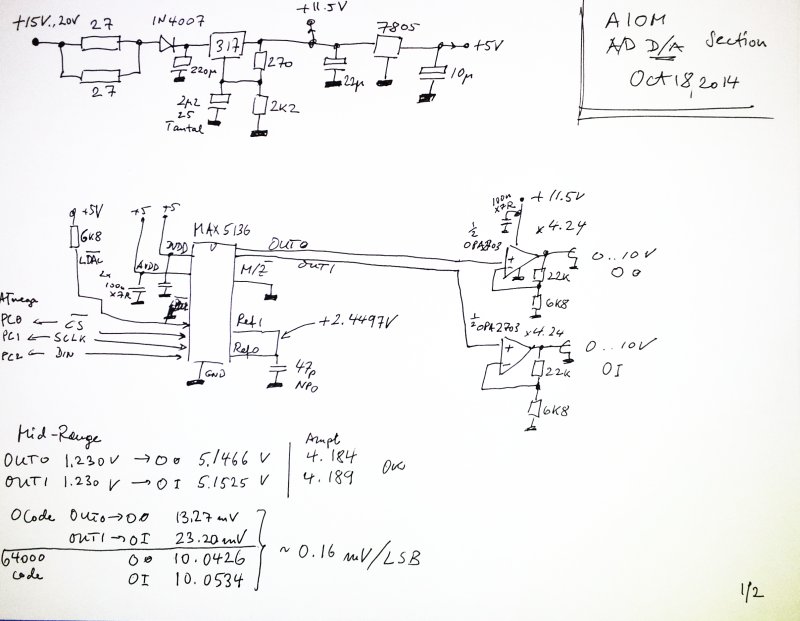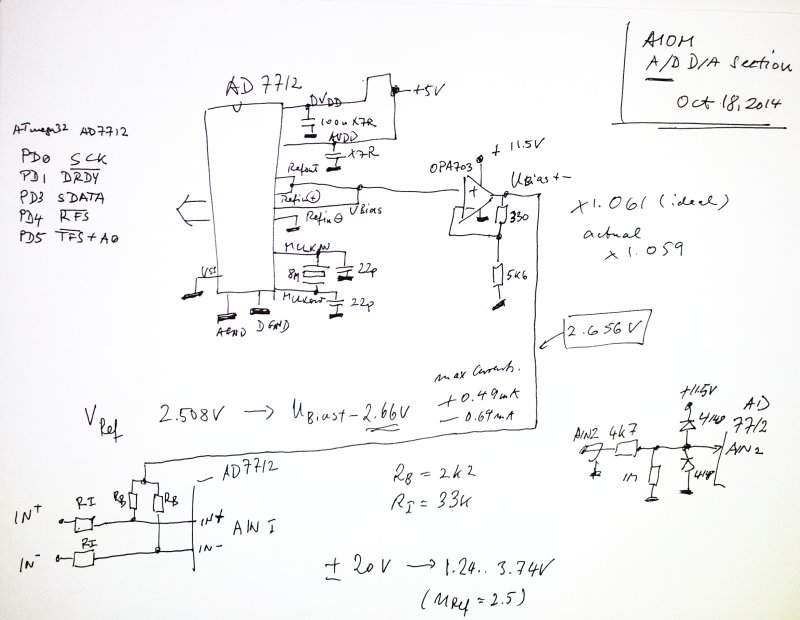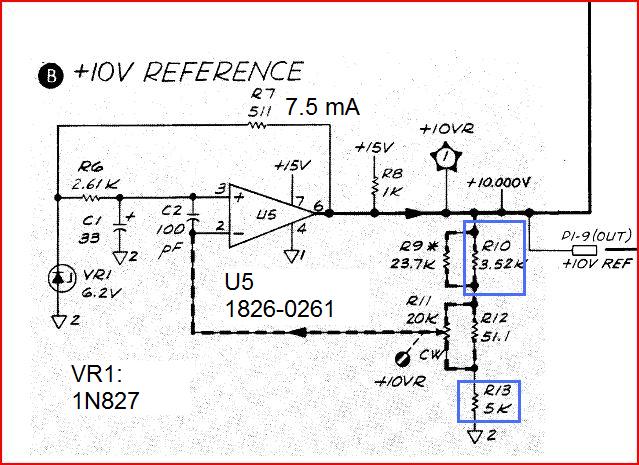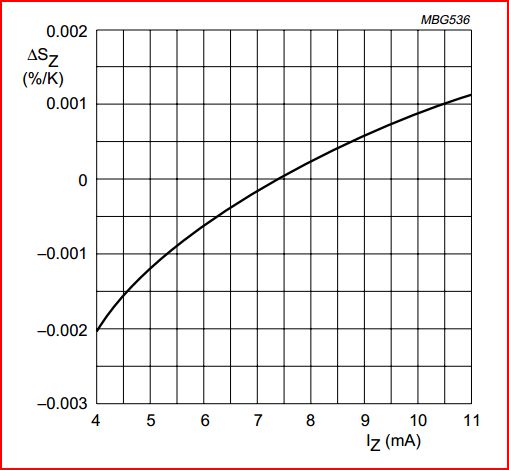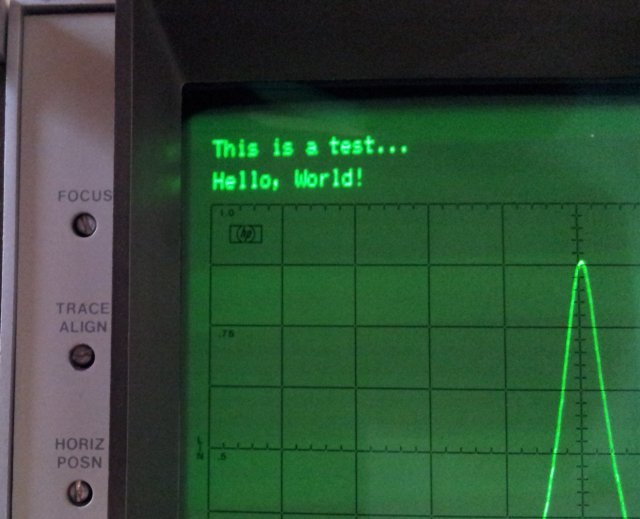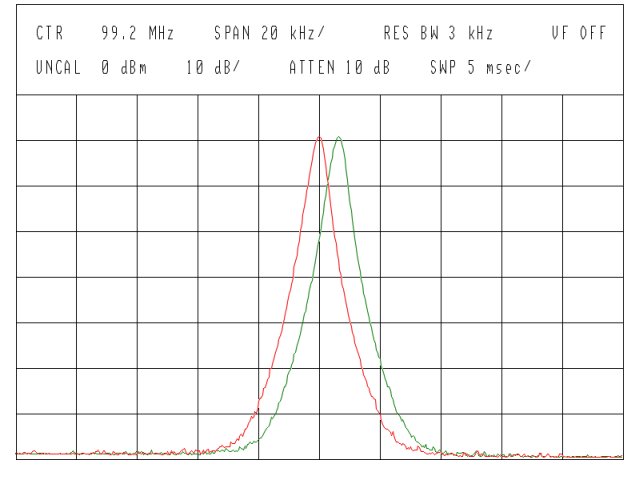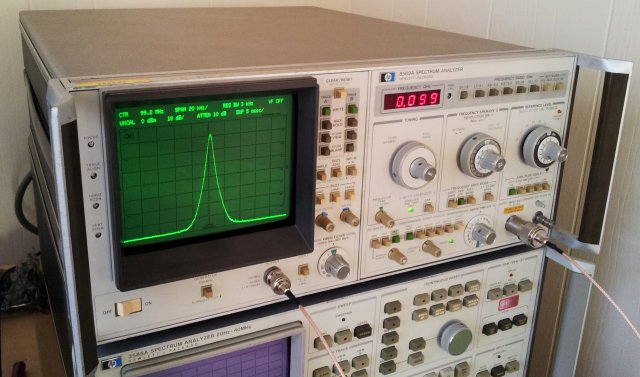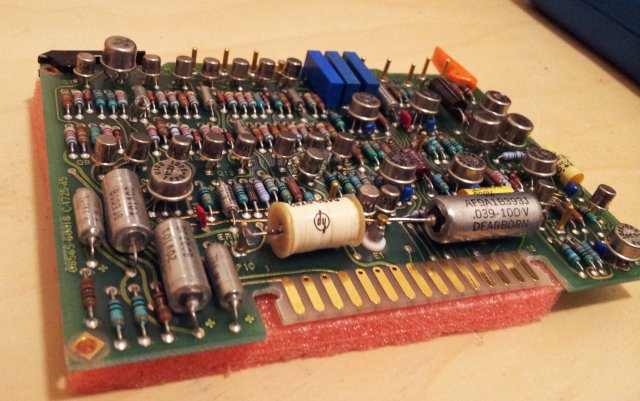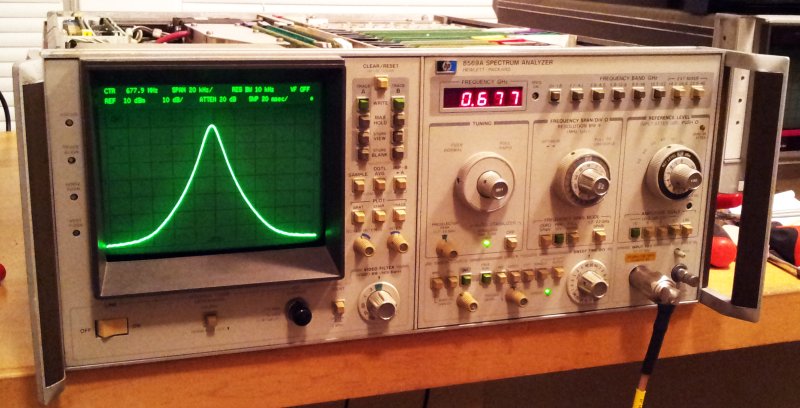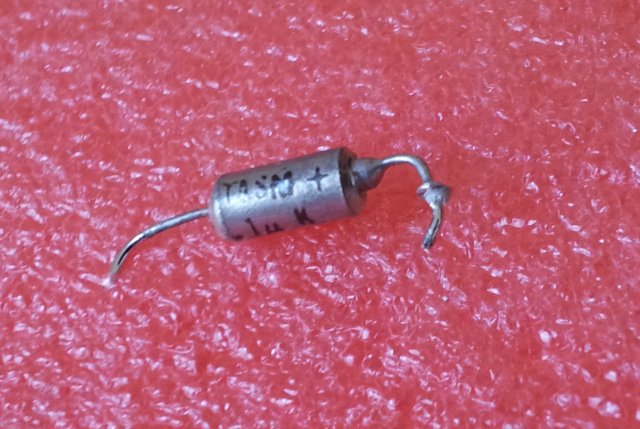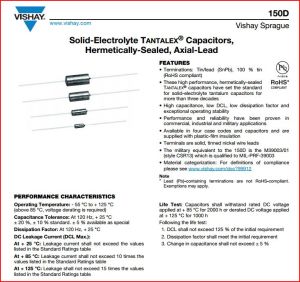This instrument just needed a few adjustments, still, very interesting to look at.
It is of a very classical design – 4 YIG oscillators (2-8, 8-12, 12-18, 18-26.5 GHz), a coupler, a detector, and all the driver and ALC circuitry to make this work.
There is also a Wiltron-brand downconverter that provides the 10 MHz to 2 GHz output, by conversion of a 4610-6600 MHz input, with a 4600 MHz LO.
The YIGs are all of best quality, Avantek parts.
The coupler, for the ALC loop, a Krytar ultra-broadband part, with a biased detector.
The generator provides ample power, 10 dBm or more, over most of the bands; about +6 dBm, at above 18 GHz – and, around 23 GHz, there is a dip in the power curve (see scope screen, showing the ALC/power signal vs. horizontal sweep). Checked the bias (was set at a constant +11 V) – changing it, and going up to +15 V, no change. Also checked the power directly at the YIG output – still, the dip. So it seems, nothing we can do about it, but for most practical purposes, about 0 dBm will be plenty, at any frequency.
After some more alingments, the frequencies and bands are spot-on (no need to re-programm the linearizer EPROMs – all YIGs are still tracking perfectly fine), some some cleaning, using 50% isopropyl alcohol – done.
The only thing left to be done – a back-up of the 2716 EPROMs that still hold the firmware, after about 30 years.

